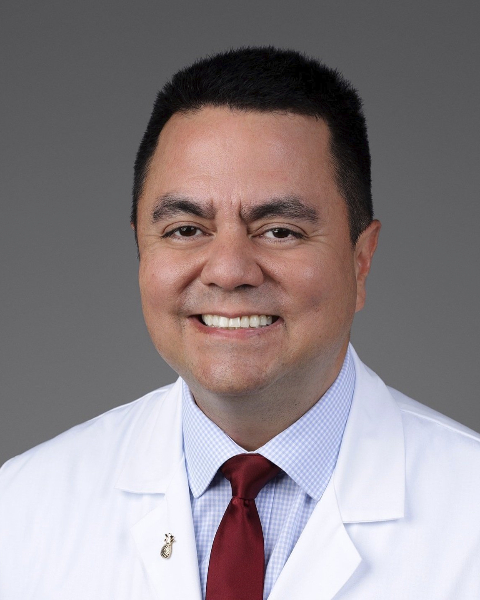PQA 10 - PQA 10 Head & Neck Cancer and Health Services Research/Global Oncology Poster Q&A
3618 - Region and Language Centric, Virtual Education and Training in Latin America: Stereotactic Body Radiotherapy and Radiosurgery Curriculum in Spanish for Medical Physicists and Radiation Oncologists
Wednesday, October 2, 2024
10:30 AM – 11:45 AM ET
Location: Hall C
Screen: 30

Serguei Castaneda, MD
CB Oncology Partners
Cutler Bay, FL
Presenter(s)
S. A. Castaneda1,2, E. Kruse1, C. Della Biancia3, D. A. Martinez Perez1,4, N. Diaz Giunta5, L. M. Loaiza6, and B. Li7,8; 1Rayos Contra Cancer, Seatle, WA, 2CB Oncology, Cutler Bay, FL, 3Department of Medical Physics, Memorial Sloan Kettering Cancer Center, New York, NY, 4Radioncologia - Oncosalud / AUNA, Medellin, Colombia, 5Centro Oncológico Anna Rocca de Bonatti, Curuzú Cuatiá, Corrientes, Argentina, 6Clínica somer, Medellin, Antioquia, Colombia, 7Rayos Contra Cancer, Seattle, WA, 8Department of Radiation Oncology, University of Washington/ Fred Hutchinson Cancer Center, Seattle, WA
Purpose/Objective(s): Limited access to radiotherapy (RT) training in low- and middle-income countries (LMICs) hinders workforce growth and beneficial technology adoption. To this end, a virtual SBRT/SRS curriculum designed for RT professionals in Latin American LMICs was developed by a non-profit organization based in U.S. We report outcomes of large-scale, flexible participation. Materials/
Methods: The program was announced through email and WhatsApp across Latin America, targeting centers with compatible technology to implement and master high-quality SBRT/SRS. Enrollment was free, open for 1 month, and allowed two types of participation: synchronous or asynchronous. Training was provided in Spanish with 15-weekly live, interactive video lectures for the participants in the synchronous cohort. Videos were recorded each week for the asynchronous cohort. The 4-month curriculum focused on simulation and registration of intracranial and extracranial sites, plan evaluation and optimization, site specific learning cases, quality assurance, and image-guided RT. Before the program and then again upon completion, synchronous participants self-evaluated confidence across 10 domains related to SBRT/SRS implementation and treatment on a 1-5 Likert scale and completed a knowledge-based 20-question multiple choice exam. Scores were analyzed using paired-t test. All participants were asked to describe their use of SBRT/SRS across brain, spine, prostate, lung, liver, and pancreas disease sites before vs. now within a 3-week window of the final training session.
Results: This cohort included 1,551 participants (1,128 synchronous; 418 asynchronous; 5 uncategorized) from 520 clinics in 24 countries. These comprised 678 (43.7%) radiation oncologists, 746 (48.1%) medical physicists, 92 (5.9%) radiation therapists, and 35 (2.3%) other professionals. Among synchronous participants, 799 (70.8%) provided paired responses after attending a mean 11.7 out of 15 sessions. Mean confidence across all SBRT/SRS domains increased from 2.95 to 3.61 (p < 0.01), and knowledge scores of SBRT/SRS increased from 45.1% to 52.7% (p < 0.01). From the beginning to the end of the course, the number of participants who said they were vs. are now not using, implementing, or already using SBRT/SRS changed significantly from 1884 to 993, 1132 to 1836, and 1667 to 1848, respectively. The shift to increased implementation and utilization held for both synchronous and asynchronous participants and was observed across all disease sites.
Conclusion: This program, tailored to LMICs, saw substantial longitudinal participation and improved knowledge/implementation of SBRT/SRS. This is the first report of outcomes comparing virtual synchronous and asynchronous methods of participation. With participants selecting their preferred option, both methods appeared feasible and effective. Given the potential and position of e-learning, further research on e-learning outcomes for RT professionals in LMICs is warranted.
Purpose/Objective(s): Limited access to radiotherapy (RT) training in low- and middle-income countries (LMICs) hinders workforce growth and beneficial technology adoption. To this end, a virtual SBRT/SRS curriculum designed for RT professionals in Latin American LMICs was developed by a non-profit organization based in U.S. We report outcomes of large-scale, flexible participation. Materials/
Methods: The program was announced through email and WhatsApp across Latin America, targeting centers with compatible technology to implement and master high-quality SBRT/SRS. Enrollment was free, open for 1 month, and allowed two types of participation: synchronous or asynchronous. Training was provided in Spanish with 15-weekly live, interactive video lectures for the participants in the synchronous cohort. Videos were recorded each week for the asynchronous cohort. The 4-month curriculum focused on simulation and registration of intracranial and extracranial sites, plan evaluation and optimization, site specific learning cases, quality assurance, and image-guided RT. Before the program and then again upon completion, synchronous participants self-evaluated confidence across 10 domains related to SBRT/SRS implementation and treatment on a 1-5 Likert scale and completed a knowledge-based 20-question multiple choice exam. Scores were analyzed using paired-t test. All participants were asked to describe their use of SBRT/SRS across brain, spine, prostate, lung, liver, and pancreas disease sites before vs. now within a 3-week window of the final training session.
Results: This cohort included 1,551 participants (1,128 synchronous; 418 asynchronous; 5 uncategorized) from 520 clinics in 24 countries. These comprised 678 (43.7%) radiation oncologists, 746 (48.1%) medical physicists, 92 (5.9%) radiation therapists, and 35 (2.3%) other professionals. Among synchronous participants, 799 (70.8%) provided paired responses after attending a mean 11.7 out of 15 sessions. Mean confidence across all SBRT/SRS domains increased from 2.95 to 3.61 (p < 0.01), and knowledge scores of SBRT/SRS increased from 45.1% to 52.7% (p < 0.01). From the beginning to the end of the course, the number of participants who said they were vs. are now not using, implementing, or already using SBRT/SRS changed significantly from 1884 to 993, 1132 to 1836, and 1667 to 1848, respectively. The shift to increased implementation and utilization held for both synchronous and asynchronous participants and was observed across all disease sites.
Conclusion: This program, tailored to LMICs, saw substantial longitudinal participation and improved knowledge/implementation of SBRT/SRS. This is the first report of outcomes comparing virtual synchronous and asynchronous methods of participation. With participants selecting their preferred option, both methods appeared feasible and effective. Given the potential and position of e-learning, further research on e-learning outcomes for RT professionals in LMICs is warranted.
